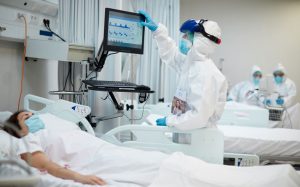Over 1 in 10 COVID-19 infections were hospital-acquired
An analysis of COVID-19 infections during the first wave has revealed that just over 1 in 10 of these infections were hospital-acquired.
During the first wave of the COVID-19 pandemic there were a huge number of patients admitted to hospital. Ensuring minimal hospital-acquired infection was therefore of paramount importance, especially as earlier research with SARS and MERS had shown that human-to-human transmission occurred mainly within the healthcare setting. In a letter to the Lancet, a team from Lancaster Medical School, Lancaster University, UK, have examined the extent to which nosocomial, i.e., hospital-acquired, COVID-19 infections occurred during the first wave of the pandemic. The researchers used records contained in the International Severe Acute Respiratory Emerging Infection Consortium (ISARIC) and which has already reported on the clinical characteristics of 20,133 hospital in-patients during the initial phase of the pandemic. For the current analysis, the team examined records of patients enrolled in the UK arm of ISARIC and who had an onset of symptoms before the beginning of August 2020. In trying to determine whether patients were likely to have a hospital-acquired infection, the team considered both their admission date and the date of symptom onset. They used the recorded infection date for a patient and identified those who were admitted before infection, as likely candidates for a hospital-acquired infection.
